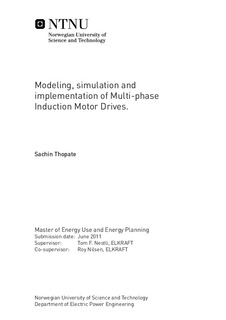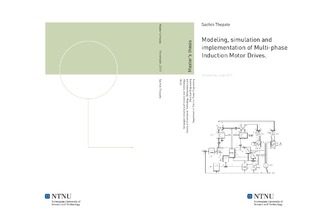| dc.contributor.advisor | Nestli, Tom F. | |
| dc.contributor.advisor | Nilsen, Roy | |
| dc.contributor.author | Thopate, Sachin | |
| dc.date.created | 2011-06-27 | |
| dc.date.issued | 2011 | |
| dc.identifier | ntnudaim:6069 | |
| dc.identifier.uri | http://hdl.handle.net/11250/2400499 | |
| dc.description.abstract | The results obtained in the simulations and the actual results that are observed on the SPIM drive for the DSFCC strategy are in agreement. The operations of the control strategies during the extreme conditions were tested such as the trip of the one inverter.
It was observed that the PI regulators are able to regulate the currents in both the control schemes, however in the DCC strategy the controllers cannot control the huge imbalance between the two inverters and the system trips same is true if the DC link voltage falls too much.
For the DSFCC strategy the SPIM drive operation is still possible even if one inverter is failed during the operation, this is possible in case if the SPIM is loaded below the rated and the inverter has sufficient overcurrent capacity.
The two control strategies are more or less gives equal performance in the steady state but in the transient state there are more z axis currents are induced in the DSFCC strategy than the DCC strategy as the DCC employs the Z axis regulator.
From the results it can be concluded that both control strategies can be complementary to each other for example in case of the failure of the one inverter on board the DSFCC control strategy can be used for the start of the machine with one inverter. While in normal operation DCC control can be used. | |
| dc.language | eng | |
| dc.publisher | NTNU | |
| dc.subject | Energi og miljø, Elektrisk energiteknikk | |
| dc.title | Modeling, simulation and implementation of Multi-phase Induction Motor Drives. | |
| dc.type | Master thesis | |

